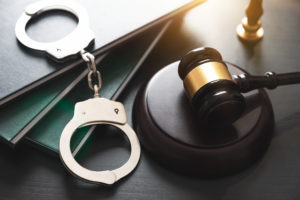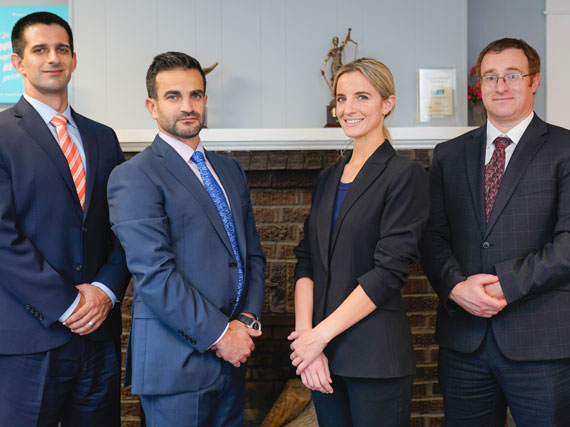Peace and Protective Orders Lawyer Maryland
 If you think you may need help from a Maryland peace and protective orders attorney, our knowledgeable lawyers can help. There are several important factors to consider. It’s important to understand what these orders entail and how they can help your situation. It’s also helpful to understand the process involved in filing for an order and finding the right legal counsel to help you navigate the situation based on your particular circumstances.
If you think you may need help from a Maryland peace and protective orders attorney, our knowledgeable lawyers can help. There are several important factors to consider. It’s important to understand what these orders entail and how they can help your situation. It’s also helpful to understand the process involved in filing for an order and finding the right legal counsel to help you navigate the situation based on your particular circumstances.
What Are Peace Or Protective Orders?
These types of orders are court-issued documents that prohibit the respondent from contacting or committing an act against the petitioner. They’re also known as restraining orders, orders of protection, or domestic violence restraining orders. Depending on the situation, the order can disallow communication between two individuals that were in a relationship or protect someone from harm caused by another person.
The Difference Between A Peace Order And Protective Order
In Maryland there are two types of legal orders designed to protect people. A protective order is used to protect someone that may have been the victim of domestic violence, stalking, or sexual assault. These can be issued against a family member or past intimate partner. Protective orders may also come with additional rules. They can prohibit contact between the two parties or require that the accused move out of a shared home. The main difference between a peace and protective order is the people they protect and why a government entity will issue one. A peace order is designed to protect someone from someone that’s not a family member or partner. For example, it could be used for protection from a neighbor or from a coworker. These orders are vital tools for law enforcement and the victims of these crimes.
Filing For An Order
A Maryland peace and protective orders attorney will tell you that the first step in obtaining a peace or protective order is drafting a petition and filing it in the appropriate court. Your petition should include reasons for seeking protection, along with any supporting evidence. The respondent must be served with notice of the hearing date to prepare their response. At the hearing, both parties will present their case before a judge, who will then make a decision. Depending on the outcome, an Interim or Final Protective Order may be issued for up to one year, with the possibility of extension.
Getting Help During the Process
Going through a peace or protective order case can be a challenging and emotional experience. It’s crucial to have experienced legal guidance to support you throughout the process. An experienced Maryland peace and protective order lawyer can provide counsel throughout the process, ensuring that all paperwork is filled out accurately and supporting you emotionally during hearings. They can also speak on your behalf during court appearances if necessary and provide helpful information regarding possible outcomes of cases. Hiring a lawyer who understands the complexities of such cases can make a significant difference in obtaining the protection you need.
If you require one of these orders, contact Azari Law, LLC so we can guide you through the process. Understanding what these orders entail and finding the right legal support can make a significant difference in obtaining the protection you need. Don’t hesitate to reach out to our Maryland peace and protective orders attorney today who can support you through this difficult time and guide you through each step of the process towards justice and protection.
Taking Steps to Leave an Abusive Situation Safely
As the experienced Maryland peace and protective orders attorneys at Azari Law, LLC understand, leaving an abusive home situation can be an incredibly challenging and potentially dangerous process. It is crucial to prioritize your safety when planning to leave. These are some steps to consider when trying to safely leave an abusive home situation. When reading them over, keep in mind that every abusive home situation is different and that you may need to modify your approach to stay safe.
- Establish a Safety Plan: Create a detailed safety plan that outlines the steps you will take to leave safely. Keep this plan confidential and share it only with trusted individuals. Consider factors such as timing, transportation, and where you will go. Identify safe locations, such as shelters, friends’ or family members’ homes, or hotels, where you can seek refuge.
- Gather Important Documents: Collect essential documents, including identification papers (such as birth certificates, passports, driver’s licenses), Social Security cards, financial records, health insurance information, and any evidence of abuse (such as photographs, messages, or police reports). Store these documents in a safe place or provide copies to someone you trust.
- Seek Support: Reach out to a domestic violence hotline or local organizations that specialize in helping individuals in abusive situations. They can provide guidance, resources, and emotional support. Counselors and advocates can help you assess your situation, develop a safety plan, and connect you with appropriate services.
- Secure Finances: Financial independence is crucial when leaving an abusive home. If possible, start saving money discreetly or open a separate bank account in your name only. If you are financially dependent on the abuser, consider seeking legal advice regarding potential options for financial support, such as spousal or child support.
- Inform Trusted Individuals: Share your situation with a few trusted friends, family members, or coworkers who can provide support and assistance and who will not compromise your safety. Let them know about your plan to leave, and establish a code word or signal to indicate when you need help or are in immediate danger. Share important contact information, such as the hotline number or local authorities, with them.
- Secure Communication: Be mindful of your digital footprint. Use secure communication methods, such as private messaging apps or email accounts, to communicate with trusted individuals or organizations. Consider changing passwords to ensure the abuser cannot access your online accounts.
- Pack an Emergency Bag: Prepare an emergency bag with essential items you will need when leaving, including clothes, medications, personal hygiene products, and any necessary documents. Keep this bag hidden in a safe place, or consider leaving it with a trusted friend or at a secure location.
- Plan for Children and Pets: If you have children or pets, prioritize their safety as well. Make arrangements for their care and consider obtaining legal advice regarding custody or protection orders that will safeguard their interests too. If you need somewhere to go, remember that many domestic violence shelters or organizations often have resources available for children and pets in abusive situations.
- Consider Legal Protection: Consult with an attorney or seek legal advice regarding Maryland peace and protective orders, and any other legal measures available to better ensure your safety. Familiarize yourself with the laws and resources available in your jurisdiction to better understand your rights and options. Reach out on a phone or device that your abuser cannot access or stop the Azari Law, LLC offices when you are not being followed.
- Contact Authorities: If you believe your safety is at immediate risk, do not hesitate to contact local law enforcement. They can provide emergency assistance and connect you with additional resources.
Remember, each situation is unique, and it is essential to tailor your safety plan to your specific circumstances. Reach out to our Maryland peace and protective orders team at Azari Law, LLC as soon as you can safely, as we can provide personalized guidance and support throughout the process.



